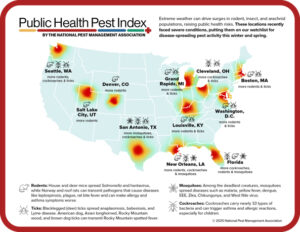Past Years Outbreak Summaries Provide for Continuous Learning
Whether caused by a keener focus on sanitation and food safety – or, as postulated by FSN, a diversion of public health professionals to the pandemic or ill people not seeking medical attention and testing in possible food-poisoning cases – 2020 has seen a definite reduction in outbreaks compared to recent years.
In fact, the nine E. coli, Listeria, or Salmonella outbreaks of the year are significantly less than the 50 confirmed outbreaks of the 2016 reporting period summarized in CDC’s recently released surveillance report. As a compilation of information from CDC’s investigations database, PulseNet, and the Foodborne Disease Outbreak Surveillance System (FDOSS), the report summarizes the investigations of multistate outbreaks and possible outbreaks of Salmonella, E. coli (STEC), and Listeria monocytogenes (Lm) of the 2016 reporting period
While the report noted that there were 230 possible multistate outbreaks detected and 174 investigated, only 50 were determined to be actual outbreaks, of which 39 were solved (18 with a confirmed food source, 10 with a suspected food source, 10 with a confirmed animal source, and one with a suspected animal source).
While it may seem moot to be focusing on 2016 outbreaks in 2020, the process can, as CDC notes, provide insights into investigative processes, improve future investigations, and help prevent illnesses. Additionally, the report contains data that provides for some interesting observations of lessons learned and of continuous learning. For example:
- In 2016, sprouts were the most commonly implicated food category in solved multistate foodborne outbreaks (five). While sprouts have not been completely eliminated as a source of foodborne illness, the FSMA Preventive Controls Rule included specific requirements for sprouts (Subpart M), for which farms had to be in compliance between 2017-2019 (depending on size). It appears to have been of value, as only one outbreak (E. coli) has been linked to sprouts thus far in 2020.
- Three outbreaks in 2016 involved novel food-pathogen pairs: flour and E. coli, frozen vegetables and Lm, and bagged salad and Lm. Novel food-pathogen pairs are an area that continually causes challenges for the industry, as the peach and onion Salmonella outbreaks of 2020 demonstrate. With neither of these products having previously been seen as having any significant risk for Salmonella contamination, we continue to find evolving issues with novel food-pathogenic pairs.
- Of the 50 outbreaks of 2016 with sufficient data, approximately 20% were unsolved. This is an issue that remains today, as three 2020 E. coli outbreaks remain unsolved at this point, with the food source unidentified.
In addition to these,
- Eleven outbreaks of 2016 were attributed to contact with animals (10 attributed to contact with backyard poultry and one to small turtles).
- Thirteen of 18 multistate outbreaks with confirmed sources resulted in product action, including 10 outbreaks associated with recalls, two with market withdrawals, and one with an FSIS public health alert.
- While investigations of possible multistate outbreaks occurred frequently during the 2016 reporting period, fewer than half (42%) of the 118 possible outbreaks investigated were determined to have sufficient data to meet the definition of a multistate outbreak.
Even though more than four years have elapsed since the outbreaks summarized in the CDC report, it remains crucial to conduct such studies and identify trends for gaining insights into food safety gaps and developing applicable prevention and control strategies.
So, while we appear to have had fewer outbreaks so far in 2020, the FDA is not reducing its efforts to track those outbreaks occurring and working to find a root cause. There has been a lot of focus at the farm level seeking root causes. Today, the FDA announced a new dashboard for outbreaks, which TAG will discuss in a future newsletter. This year, we have also seen two new commodities associated with outbreaks (onions and peaches), which continues to send all of us in the food industry a message to “expect the unexpected” and always be ready to deal with incidents, outbreaks, recalls and regulatory actions.




